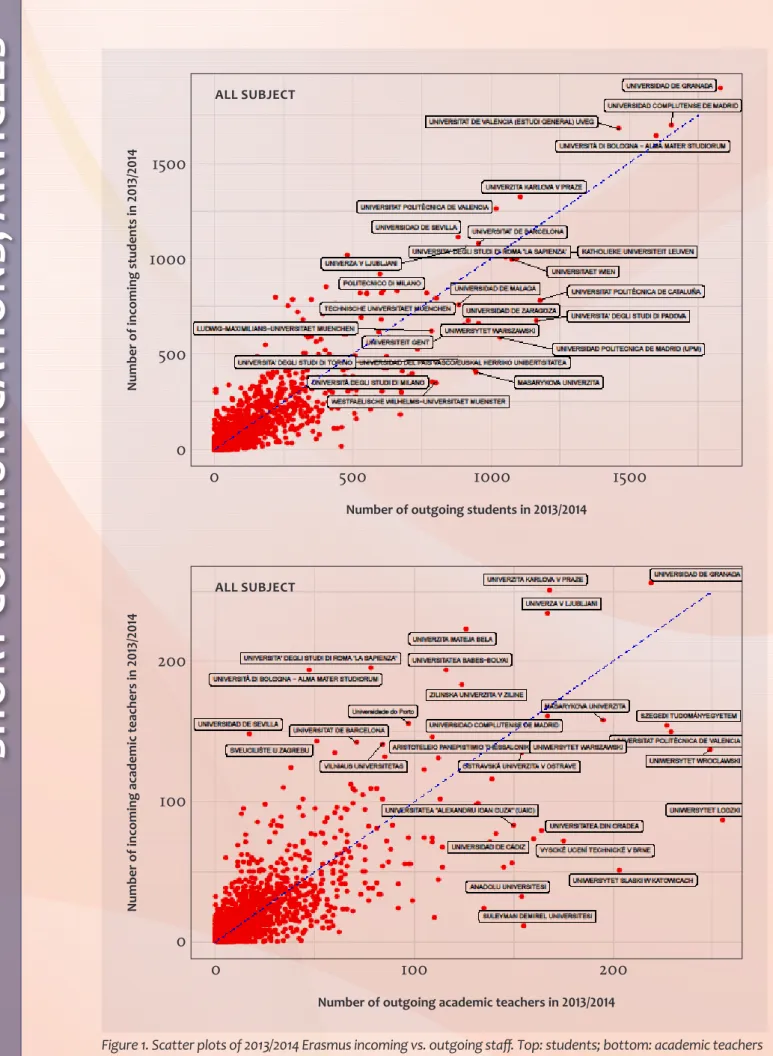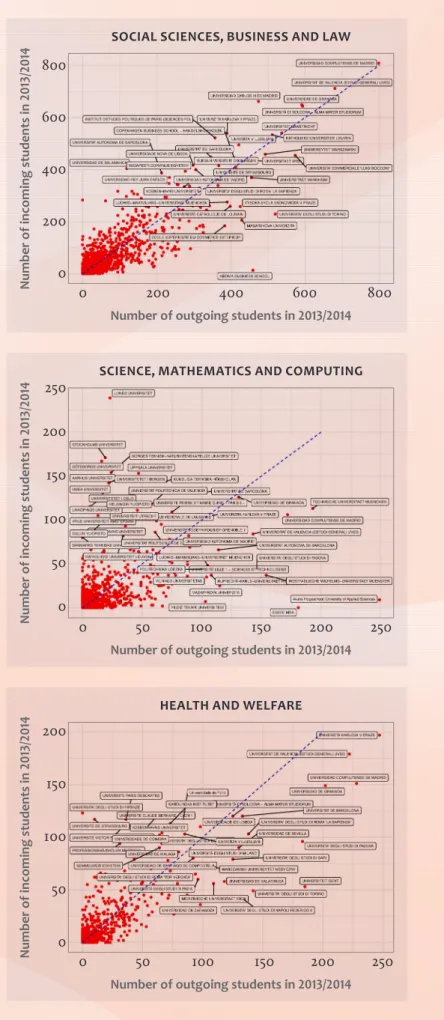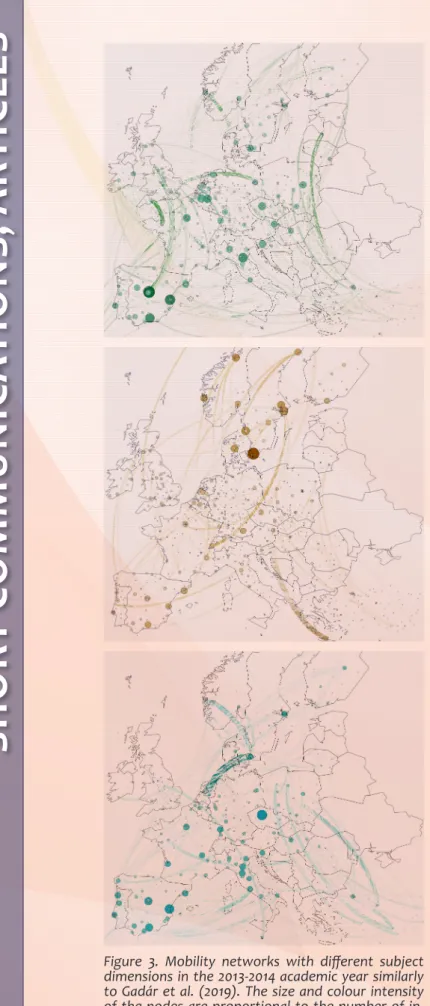EDITORIAL
CONTENTS
EDITORIAL Special Focus:
The global COVID-19 challenge page 1 RESEARCH IN FOCUS K. Decock, K. Debackere, A. Vandamme, B. van Looy:
Scenario-driven Forecasting: Lessons Learned from Mod- eling the COVID-19 Pandemic page 2 CONFERENCE REPORT Conference Report on ISSI2019 page 7 ARTICLES R. Rousseau:
Interdisciplinar- ity of an Article as Measured through References: Is Scale-
invariance Really Needed?
page 17 P- Chi, Zs. Kosztyán, L. Gadár, V. Csányi, B. Thijs, A. Telcs, W. Glänzel:
A Multilayer Network Analysis
#61 / Volume 16 number 1 March 2020
quaterly e-newsletter of the international society for scientometrics and Informetrics ISSN 1998-5460
EDITORIAL
SPECIAL FOCUS:
THE GLOBAL COVID-19 CHALLENGE
WOLFGANG GLÄNZEL1 & LIN ZHANG1, 2
1 ECOOM and Dept. MSI, KU Leuven, Belgium
2 School of Information Management, Wuhan University, China This number of the ISSI newsletter comes out with considerable delay.
There were and still are severe reasons for that delay: The collection and preparation of the contributions for the present number was accompa- nied and overshadowed by the outbreak and spread of the COVID-19 pandemic. Therefore, we decided to put a relevant article – on modelling the diffusion patterns of COVID-19 and a scenario-driven thinking in forecasting the course of the pandemic – at the heart of the present issue of the Newsletter. The paper by Decock et al. (p. 2–6) is co-authored by our colleagues at KU Leuven. Extended versions and follow-ups of this con- tribution will be published in international scientific journals very soon.
In this context we would like to mention, that in a further article on COVID-19 (Zhang, L., Zhao, WJ., Sun, BB., Huang, Y, Glänzel, W. (2020), How scientific research reacts to international public health emergencies: a global analysis of response patterns, Scientometrics, in press), the two authors of this editorial jointly study with their co-workers how scientific research reacts to international public health emergencies. The article, which is to come in one of the next issues of the journal Scientometrics, provides the bibliometric characteristics and a comparative analysis of global academic response pat- terns to global public-health emergencies in previous pandemics/epidemics of this century with that experienced in the present situation of COVID-19.
ISSI e-Newsletter (ISSN 1998-5460) is published by ISSI (http://www.issi-society.org/).
Contributors to the newsletter should contact the editorial board by e-mail.
• Wolfgang Glänzel, Editor-in-Chief: wolfgang.glanzel[at]kuleuven.be
• Balázs Schlemmer, Managing Editor: balazs.schlemmer[at]gmail.com
• Sarah Heeffer, Assistant Editor: sarah.heeffer[at]kuleuven.be
• Judit Bar-Ilan
• Sujit Bhattacharya: sujit_academic[at]yahoo.com
• María Bordons: mbordons[at]cchs.csic.es
• Juan Gorraiz: juan.gorraiz[at]univie.ac.at
• Jacqueline Leta: jleta[at]bioqmed.ufrj.br
• Olle Persson: olle.persson[at]soc.umu.se
• Ronald Rousseau: ronald.rousseau[at]kuleuven.be
• Dietmar Wolfram: dwolfram[at]uwm.edu
Accepted contributions are moderated by the board. Guidelines for contributors can be found at http://www.issi-society.org/editorial.html.
SHORT COMMUNICA TIONS , ARTICLES
A MULTILAYER NETWORK ANALYSIS OF MOBILITY
AND COLLABORATION IN EUROPEAN UNIVERSITY RESEARCH
1 ECOOM, KU Leuven, Leuven, Belgium
2 MTA-PE Budapest Ranking Research Group, University of Pannonia, Budapest, Hungary
3 Wigner Research Center for Physics,
VIAS – Virtual Institute of Advanced Studies, Budapest, Hungary
4 Library and Information Centre of the Hungarian Academy of Sciences, Dept Science Policy & Scientometrics, Budapest, Hungary
BART
THIJS 1 ANDRÁS
TELCS 2, 3 WOLFGANG GLÄNZEL 1, 4 PEI-SHAN
CHI 1 ZSOLT
KOSZTYÁN 2 LÁSZLÓ
GADÁR 2 VIVIAN
CSÁNYI 2
ABSTRACT: The present report gives an overview of a recent joint Hungarian-Flemish project funded by the Research Foundation - Flanders (FWO). The project aimed to study European university research from the viewpoint of scientists’ mobility and collaboration patterns of the most important universities of selected countries.
SHORT COMMUNICA TIONS , ARTICLES
INTRODUCTION
A two-year joint research project between the ECOOM team at KU Leuven and the Budapest Ranking Research Group at Hungarian Academy of Sciences were con- ducted during 2018 and 2019. This project aims to provide a high level of analytic and visualization system to explore the scien- tific contribution of European universities.
Based on its capacities the parties studied and developed fine-tuned, targeted uni- versity multilayer networks. In short, the partners created a database which is basi- cally a multi-labelled graph in which verti- ces are institutions and edges are citations.
Institutions carry some feature descripting labels while edges carry labels describing the citation relation in details (publication time, citation time, subject classification etc.). Unlike other endeavours, this pro- ject did not aim to conduct any ranking exercise, which provided us the liberty to choose appropriate data sources and to se- lect European countries and universities for a more complex multilayer exercise. In par- ticular, we have selected the following data sources to highlight on essential aspects in researchers’ mobility and collaboration.
The Erasmus mobility network – used to investigate spatial characteristics for geo- coded institutes – was enriched with the integration of mobility data and three data- bases: the institutional socio-economic data of the European Tertiary Education Regis- ter (ETER)1, the Global Research Identifier Database (GRID)2 as well as points of inter- est concerning surrounding institutions.
The network provides relevant information of the mobility patterns and the attractive- ness of the institutions. A publication net- work for the 2013 data with weighted links was based on bibliographic coupling and conduced to further university clustering.
The Academic Space Explorer (ASE) system was then adapted with some filtering, clus-
tering and analytic tools to illustrate the evaluative profiles of European countries and the interconnections between univer- sities in Belgium, Germany and Hungary.
RESULT SUMMARY
The project cooperated by two institu- tions, KU Leuven and Hungarian Academy of Sciences, generated several national and international research outputs, for a na- tional conference (Csányi, 2019), three con- tributions for international conferences (Kosztyán et al., 2018a, 2018b; Fehérvölgyi, et al, 2019), four papers for international peer-reviewed journals (Gadár et al., 2018;
Gadár & Abonyi, 2019; Gadár et al., 2019;
Kosztyán et al., 2019) and six research semi- nars organised in Budapest and Leuven. In what follows, we introduce and summarise the main findings of these results.
The Erasmus activity network served as the main source of tracking mobility and analysing European networks from this perspective. The student and teacher mo- bility patterns based on 2013/2014 Erasmus data are somewhat different (see Figure 1;
top: students, bottom: teachers). This is to a certain extent due to the different mo- tivations for and durations of their stays abroad. Generally Spanish universities at- tract more students and academic teachers compared to their outgoing ones. By con- trast, Turkish and Polish universities have a disproportionate number of outgoing teachers as compared with the incoming ones, whereas German and Italian univer- sities have much more outgoing students than incoming ones. Figure 1 also illus- trates the active participation of Spanish universities in the Erasmus project.
In order to gain a deeper insight into the Erasmus student mobility, activities in three different subject areas were stud- ied (cf. Figure 2). We have selected applied fields in the sciences along with the hu- manities based on Erasmus project clas-
SHORT COMMUNICA TIONS , ARTICLES
0 500 1000 1500
Number of incoming students in 2013/2014
1500
1000
500
0
Number of outgoing students in 2013/2014 ALL SUBJECT
0 100 200
Number of incoming academic teachers in 2013/2014
200
100
0
Number of outgoing academic teachers in 2013/2014 ALL SUBJECT
Figure 1. Scatter plots of 2013/2014 Erasmus incoming vs. outgoing staff. Top: students; bottom: academic teachers
SHORT COMMUNICA TIONS , ARTICLES
Business and Law, Spanish uni- versities attract more students from other universities than their own students who leave for staying at other institutions abroad. In Science, Mathemat- ics an Computing, Nordic and some Belgian and Dutch uni- versities show their advantage to attract more students from other universities than send- ing out their own students. In Health and Welfare, a few uni- versities from Italy, Czech Re- public, Sweden, Denmark and Hungary show their receiving role for unproportionally more incoming than outgoing stu- dents. The observed subject- related difference revealed in Figure 2 points us a new direc- tion to dig in from the mobility data. We further looked at the spatial multiplex network of the student mobility based on the determined GPS coordinates in the three main subject areas.
Figure 3 – inspired by Ga dár et al. (2019) – linked the data from the Erasmus project, the European Tertiary Education Register (ETER) and the Global Research Identifier Database (GRID) to convert a spatial net- work on geographical map. It shows different connections in the three subject areas. In So- cial science, Business and Law, the connections between the UK and European countries are strikingly strong. Universities in Spain, France, Germany, Bel- gium and Italy are also impor- tant contributors in the Erasmus student mobility network. In the field Science, Mathematics and Computing, Nordic universities
play a more important role in the Figure 2. Scatter plots of 2013/2014 Erasmus incoming VS. outgoing stu- 800
600 400 200 0
0 200 400 600 800 Number of outgoing students in 2013/2014
Number of incoming students in 2013/2014
SOCIAL SCIENCES, BUSINESS AND LAW
200
150
100 50
0
0 50 100 150 200 250 Number of outgoing students in 2013/2014
Number of incoming students in 2013/2014
HEALTH AND WELFARE 250
200 150 100 50 0
0 50 100 150 200 250 Number of outgoing students in 2013/2014
Number of incoming students in 2013/2014
SCIENCE, MATHEMATICS AND COMPUTING
SHORT COMMUNICA TIONS , ARTICLES
Welfare sciences, The Netherlands is send- ing a large number of students to Denmark.
Italy, Spain and Czech Republic are central nodes of student mobility in this field.
A further perspective to focus on the countries we are especially interested in, was taken and presented in Figure 4. This new dimension was added on the basis of scholarly collaboration measured by co- authorship of scientific publications in- dexed in Clarivate Analytics Web of Sci- ence Core Collection (WoS). Although the time frames and actors are different in these dimensions, i.e., we have not studied the publication patterns of the Erasmus students but the complete research staff affiliated with the selected universities, at this level of aggregation this approach may add a new dimension not directly linked to the network created by previous actors. To zoom into targeted countries, the student and teacher mobility and scholarly publica- tion collaboration networks were limited into the international connections among Belgium, Germany and Hungary. Regard- ing the student mobility, universities in Berlin are highly connected with Flemish universities and universities in Budapest.
Universities in Cologne area and Munich area received and sent out many students from or to universities in Budapest and Flanders. The teacher mobility was more equally distributed among universities.
The connections from Hungary are not as strong as those among Belgium and Ger- many. In terms of WoS publications in 2013, Belgian universities strongly collabo- rated with the other two countries, espe- cially with German universities.
DISCUSSION AND FUTURE RESEARCH
The joint project has offered a new per- spective. The usual macro and meso bib- liometric study of research collaboration and the socio-bibliometric analysis of stu- dents’ and researchers’ mobility could be
Figure 3. Mobility networks with different subject dimensions in the 2013-2014 academic year similarly to Gadár et al. (2019). The size and colour intensity of the nodes are proportional to the number of in- coming students. The size and colour intensity of the edges are proportional to the number of students that travel between the connected HEIs. Top: Social science, Business and Law; Middle: Science, Math- ematics and Computing; Bottom: Health and Welfare
SHORT COMMUNICA TIONS , ARTICLES
combined into a first mul- ti-layer framework, even if only a small number of institutions could be taken into account. Overlapping network layers indicate how correlated (or not) mobility and research col- laboration systems are with each other. Based on our preliminary results, there does not appear to be a significant overlap between mobility and re- search collaborations, due to the different motiva- tions and driving forces of different collaboration.
In the present project we could much benefit from our local knowledge and experience, which was all the more important because we had to clean a large amount of data on the bibliometric part for the integration into the framework. The main ob- jective and achievement of the project was there- fore rather the creation of the framework and the elaboration of the possible components of this multi- layer network. Figure 4 has shown that different patterns can be attributed to individual components.
Beyond the programmes enabling student and staff mobility, there are differ- ent individual interests in- fluencing and shaping the patterns of student mo- bility particular making destinations attractive on the long-term (education,
career) compared to rather Figure 4. Mobility and scholarly collaboration international networks be-
SHORT COMMUNICA TIONS , ARTICLES
ity. Collaboration patterns are, by contrast, influenced to a lesser extent by individual interests as those are part of larger, mostly subject-specific, European and even global collaboration frameworks. These patterns can be recognised in Figure 4. The sparser mobility networks top and notably in the centre is contrasted by the denser col- laboration networks that are often based multilateral projects. This also implies the involvement of more universities and the higher density of networks. At the future works, subnetworks of subjects can be compared. In addition, further layers can be integrated to the multilayer structure such as co-authorship network of publica- tions and the patents. In this way the mo- bility and collaboration activities of HEIs can be deeper analysed.
A further recognition in the project is that we found different network patterns in subject area layers, which is mostly re- lated to the characteristics of the institu- tions. In case of real sciences, the attrac- tiveness of Northern European universities for student mobility is apparent, while in other subject areas Southern European in- stitutions receive the most students. The characteristics of institutions depend on the representation of disciplines moreo- ver the educational and/or research and/or innovation focus of the institution. Dif- ferent characteristics result different col- laboration systems resulting different net- work patterns. Future research directions could be the examination of correlations between the strength of institutions, the position of higher education rankings and the characteristics of the emerged collabo- ration networks.
ACKNOWLEDGMENTS
The project was partially funded by “Analysis of Scientific Performance of Universities" – bi- lateral mobility project of HAS – FWO 2018- 19. A bilateral collaboration programme of the Research Foundation – Flanders (FWO).
REFERENCES
Fehérvölgyi, B., Kosztyán, Z., Pál, M., Csizmadia, T., Kerekes, K. (2019). Measuring third mission activities of the universities by multi-layer networks. The 4th International Conference on Economics and Business Management – ICEBM, 23 November, Cluj-Napoca, Romania.
Csányi, V. (2019). The position of Hungary in in- ternational patent statistics. LXI. Georgikon Conference. 3-4 October, Keszthely, Hungary.
Gadár, L., Abony, J. (2019). Frequent pattern min- ing in multidimensional organizational networks. Scientific Reports, 9, Article number 3322.
Gadár, L., Kosztyán, Z., Abony, J. (2018). The Set- tlement Structure Is Reflected in Personal Investments: Distance-Dependent Network Modularity-Based Measurement of Regional Attractiveness. Complexity, Article ID 1306704, 16 pages.
Gadár, L., Kosztyán, Z., Telcs, A., Abony, J. (2019). A multilayer and spatial description of the Eras- mus mobility network. Scientific Data, 7, 41.
Kosztyán, Z., Banász, Z., Csányi, V., Telcs, A. (2019).
Rankings or leagues or rankings on leagues? – Ranking in fair reference groups. Tertiary Edu- cation and Management volume, 25, 289–310.
Kosztyán, Z., Gadár, L., Telcs, A. (2018). Student and Teaching Mobility & Knowledge Trans- fer: a social network analysis study. The Third University Mission Conference, 30 November, Moscow, Russia.
Kosztyán, Z., Banász, Z., Csányi, V., Telcs, A. (2018).
From Global Rankings to Rankings on Leagues – a case study of country leagues. IREG-9 Conference, 23-25 May, Hasselt, Belgium.


